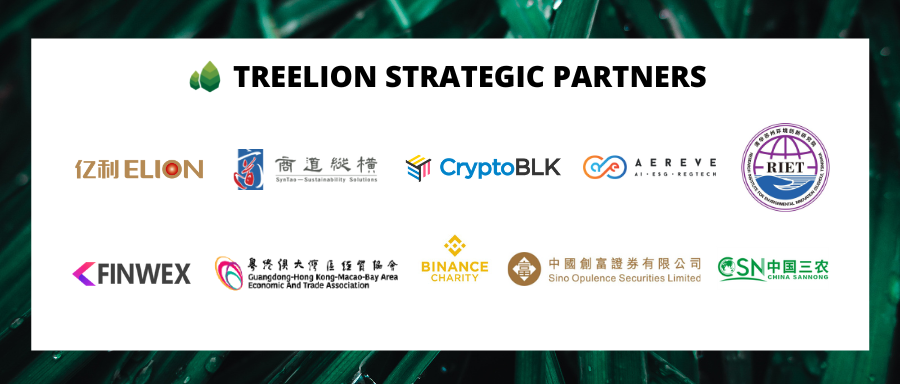
Statistical accounting of carbon emissions is an important basis for achieving carbon peaking and carbon neutrality, and is an important basis for formulating policies, promoting work, conducting assessments, and negotiating and implementing contracts. Recently, the National Development and Reform Commission and relevant departments jointly issued the ” Implementation Plan for Accelerating the Establishment of a Unified and Standardized Statistical and Accounting System for Carbon Emissions” (hereinafter referred to as the “Plan”), to make comprehensive work arrangements for accelerating the establishment of a unified and standardized carbon emission statistical and accounting system. It is of great significance to consolidate the carbon emission data foundation and support the realization of the carbon neutralization goal of carbon peaking.

Part 1
The “Plan” is classified and implemented, and four key tasks are proposed
The construction of a carbon emission accounting system is a complex and huge systematic project. The statistical accounting of carbon emissions is carried out for different levels of accounting objects, with different work objectives and specific work requirements. The “Plan” proposes four key task requirements for three types of accounting objects at the regional level (national and local), industry and enterprise level, and product level.
- At the regional level, the requirements for the establishment of a national and local carbon emission statistical accounting system are proposed. Statistical accounting of carbon emissions at the regional level is mainly used for the analysis of the carbon emissions situation in the region and the research on the low-carbon development path, which can provide decision support for promoting the “dual carbon” work in the region, and for the development of carbon peaking and carbon neutrality evaluation. Data support is provided for the assessment work. The “Plan” requires that the National Bureau of Statistics uniformly formulate the national and provincial-level carbon emission statistical accounting methods, clarify the statistical responsibilities of relevant departments and localities for energy activities, industrial production processes, emission factors, power input and output and other relevant basic data, and organize the national and provincial-level annual total carbon emissions accounting.
- To put forward requirements for improving the carbon emission accounting mechanism at the industry and enterprise level. Industry enterprises are important subjects to strengthen carbon emission management. Carbon emission statistics and accounting at the industry and enterprise level need to fully reflect the carbon emission levels of the industry and enterprises, support industry carbon peak forecasting and early warning, and enterprise carbon emission benchmarking analysis. At the same time, it should meet the needs of the carbon market. Trading, green finance and other job requirements. From 2013 to 2015, the National Development and Reform Commission published corporate greenhouse gas emission accounting methods and reporting guidelines for 24 industries. In 2015, the National Standards Commission issued the General Principles of Greenhouse Gas Emission Accounting and Reporting for Industrial Enterprises and 10 key industries. relevant national standards for accounting and reporting of corporate greenhouse gas emissions. In response to the new situation, the “Plan” makes further arrangements for the carbon emission accounting work of industrial enterprises, requiring the formulation and revision of relevant guidelines and standards, and continuous improvement of the accounting mechanism to effectively meet carbon emission management and market demand.
- To put forward the requirements for establishing and improving the carbon emission accounting method of key products at the product level. Product carbon emission accounting requires a large amount of detailed data support, and promoting product-level carbon emission accounting is conducive to the low-carbon evaluation of products from the perspective of the whole life cycle, promotes enterprises to strengthen carbon emission management, and guides consumers to implement green procurement; at the same time, it can serve Domestic and international dual circulation helps Chinese products integrate into the international green industrial chain supply chain system. The “Plan” proposes to study and formulate carbon emission accounting methods for raw materials, semi-finished products and products of key industries, and promote the gradual formation of national standards for accounting methods with good applicability and high maturity.
- In order to strengthen the support for negotiating the implementation of the treaty, the requirements for improving the national greenhouse gas inventory compilation mechanism are put forward. The “Plan” proposes to continue to promote the preparation of the national greenhouse gas inventory, establish a normalized management and regular update mechanism, compile the national greenhouse gas inventory according to the implementation requirements, and promote the method of inventory preparation to be in line with international requirements.
Part 2
The “Plan” is based on reality and scientifically deploys various tasks
The carbon emission statistical accounting work at different levels and dimensions involves different accounting objects, different accounting boundaries, different work objectives, different data sources, different management departments, and different work foundations. The greater the workload of content and data, the lower the availability of data and the higher the cost. Therefore, it is necessary to balance the relationship between scientificity and operability. This requires the establishment of a unified and standardized carbon emission statistics and accounting system. We must adhere to the reality. We must speed up the promotion, but we must not do everything in one go. We must adhere to the goal orientation, grasp the key points of work, and follow the order of urgent needs first, easy first and difficult. Carry out work in a scientific and orderly manner, gradually build a carbon emission statistical and accounting system that is complete, interconnected, strongly supported, and standardized, and steadily consolidate the data base for carbon peaking and carbon neutrality.
- To set stage goals and clarify the direction of work. The “Plan” sets a phased work target for promoting carbon emission statistics and accounting during the “14th Five-Year Plan” period. By 2023, it is necessary to basically establish a departmental collaboration mechanism with clear responsibilities, clear division of labor, and smooth connection. The relevant statistical foundation will be further strengthened, the carbon emission statistical accounting work in various industries will be carried out steadily, and a unified and standardized carbon emission statistical accounting system will be initially established. By 2025, the unified and standardized carbon emission statistics and accounting system will be further improved, and the statistical basis, accounting methods, technical means, and data quality will be improved, providing comprehensive, scientific, and reliable data support for carbon peaking and carbon neutralization.
- To focus on the current key points, emphasizing the urgent need first. The “Plan” proposes to adhere to the working principle of scientific application, and emphasizes the working method of urgent need first. For example, according to the work requirements and the current basis, the “Plan” identified four key tasks, and based on the nature of the work tasks and the actual national conditions, it clarified the specific work items that must be reported to the leading group for review and to the leading group’s office for recordation. For another example, with regard to the statistical accounting system, it is first required to formulate the national and provincial carbon emission accounting methods, and to organize the annual total carbon emission accounting of the national and provincial regions, and to encourage the regions below the provincial level.
- To base on the reality of national conditions and follow the easy first and then the difficult. The “Plan” proposes to advance the relevant work in the order of easy first and then difficult, which is an important manifestation of insisting on gradual progress and seeking truth from facts. In terms of accounting scope, while focusing on carbon dioxide emissions in energy and industrial production processes, methodological research in the fields of non-carbon dioxide emissions, carbon capture, storage and utilization, and carbon sinks is also encouraged. In terms of basic statistical work, it is necessary to gradually establish and improve the activity level data statistical system that is compatible with the national and provincial carbon emission statistical accounting requirements. In the construction of emission factor database, it is necessary to gradually establish an emission factor compilation and update system with wide coverage, strong practicability and high credibility.
Part 3
The “Plan” divides labor and cooperates to build an efficient and smooth working mechanism
To establish a unified and standardized carbon emission statistics and accounting system, data support is the foundation, unified specifications are the requirements, and division of labor and cooperation is the key. It is necessary to give full play to my country’s institutional advantages and strengthen overall planning under the unified leadership of the carbon peak carbon neutralization work leading group. Coordinate, straighten out the work mechanism, optimize the work process, and form a work pattern in which each performs its own duties and is coordinated and efficient.
- To strengthen the unified leadership of the carbon peak carbon neutral work leading group. In order to promote the top-level design and unified specification of the carbon emission statistical accounting system, the “Plan” fully emphasizes the unified leadership of the leading group over the carbon emission statistical accounting work, and clearly proposes the aforementioned four important accounting methods, as well as national and provincial carbon emission data, key points Industry carbon emission data and national greenhouse gas inventories must be submitted to the leading group for review, and statistical accounting methods, guidelines, standards, etc. The above work requirements strengthen the seriousness and standardization of statistical accounting work, and provide a mechanism guarantee for the continuous improvement of the level and quality of statistical accounting.
- To build a working mechanism for the division of labor between departments and localities. The “Plan” proposes a division of labor for the above-mentioned four types of important accounting work and safeguard measures, and clarifies the leading departments and working mechanisms for each work to ensure that each work is implemented and coordinated efficiently. At the same time, all regions are encouraged to refer to the national and provincial carbon emission statistics and accounting methods, in accordance with the principles of data availability, feasible methods, and comparable results, to formulate carbon emission statistics and accounting methods for regions below the provincial level, and encourage qualified regions to compile provincial-level greenhouses. gas list.
- To actively play the role of scientific research institutions and professional teams. Greenhouse gas accounting is a highly policy and technical work with high professional requirements and requires the joint participation of all parties. The “Plan” proposes to encourage universities, scientific research institutes, enterprises and institutions to carry out research on carbon emission methodology, and to strengthen various extended measurement research work on consumer carbon emissions, per capita cumulative carbon emissions, implied carbon emissions, and product carbon footprints in key industries. , to promote accounting research in the fields of non-CO2 greenhouse gas emissions, carbon capture, storage and utilization, and carbon sinks. At the same time, the “Plan” proposes to strengthen the construction of grass-roots institutions and teams for carbon emission statistics and accounting, and comprehensively improve the professional level of employees.

The “Plan” puts forward the overall requirements and main goals for accelerating the establishment of a unified and standardized carbon emission statistical accounting system, and clarifies key tasks, safeguard measures and work requirements. It is a programmatic document for deepening the carbon emission statistical accounting work. Through the respective functions and joint efforts of all relevant departments, localities and units, it will play an important role in accelerating the establishment of a unified and standardized carbon emission statistics and accounting system, so as to do a good job of carbon peaking and carbon neutrality in an overall and orderly manner, and promote economic development. The comprehensive green transformation of social development provides solid data support and basic guarantee.



